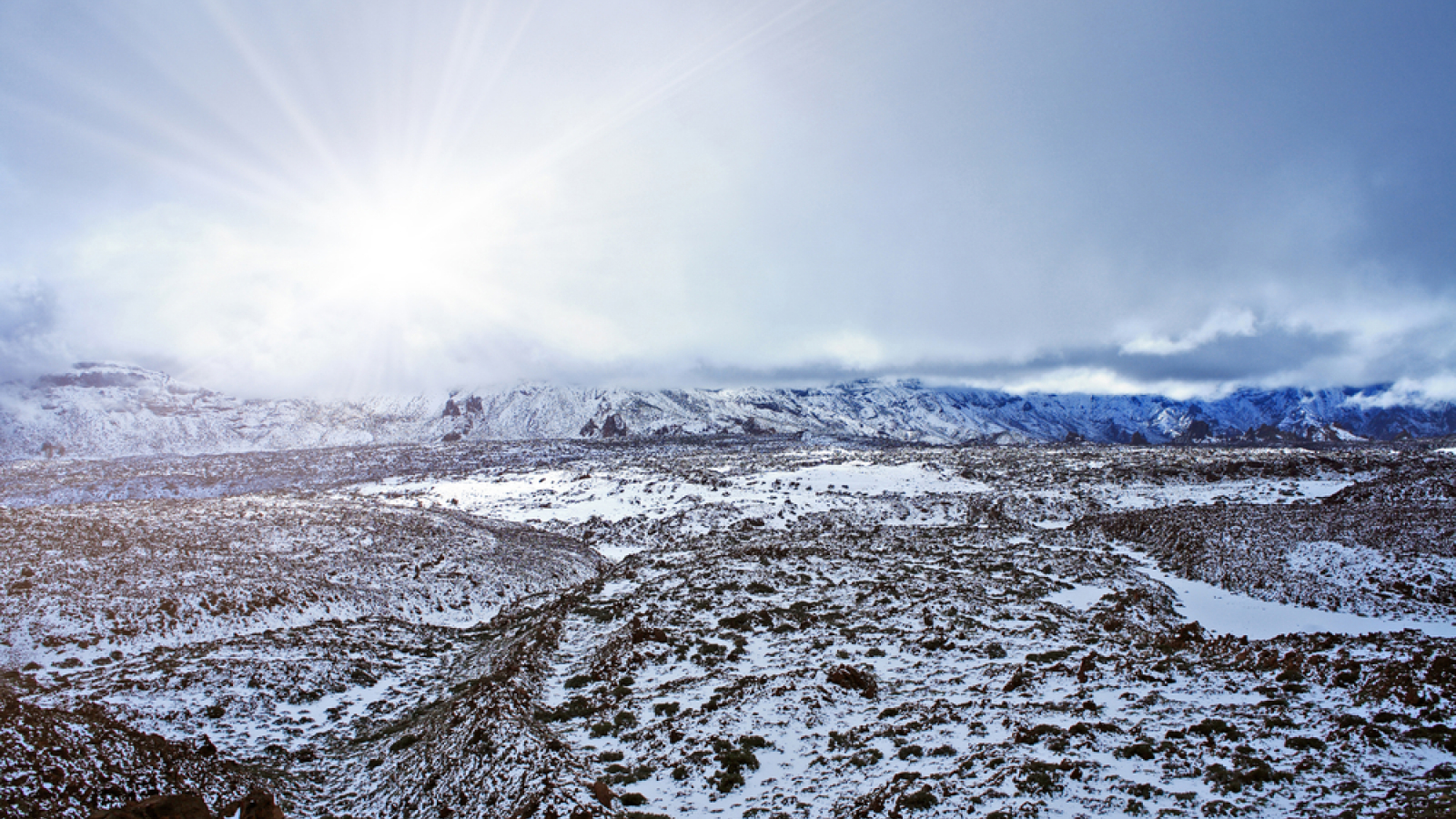We're within 3 years of reaching a critical climate threshold. Can we reverse course?
A report published in June found that the world only has three years before it crosses the 1.5 C climate target. So what should we do now?

In June, more than 60 climate scientists warned that the remaining "carbon budget" to stay below a dire warming threshold will be exhausted in as little as three years at the current rate of emissions.
But if we pass that critical 1.5-degree-Celsius (2.7 degrees Fahrenheit) warming threshold, is a climate catastrophe inevitable? And can we do anything to reverse that temperature rise?
Although crossing the 1.5 C threshold will lead to problems, particularly for island nations, and raise the risk of ecosystems permanently transforming, the planet won't nosedive into an apocalypse. And once we rein in emissions, there are ways to slowly bring temperatures down if we wind up crossing that 1.5 C threshold, experts told Live Science.
Still, that doesn't mean we should stop trying to curb emissions now, which is cheaper, easier and more effective than reversing a temperature rise that has already happened, Michael Mann, a leading climate scientist and director of the Center for Science, Sustainability and the Media at the University of Pennsylvania, told Live Science in an email.
"Every fraction of a degree of warming that we prevent makes us better off," Mann said.
Delayed response
A report released June 19 found that the world has only 143 billion tons (130 billion metric tons) of carbon dioxide (CO2) left to emit before we likely cross the 1.5 C target set in the Paris Agreement, which was signed by 195 countries to tackle climate change. We currently emit around 46 billion tons (42 billion metric tons) of CO2 per year, according to the World Meteorological Organization.
The world is currently 1.2 C (2.2 F) warmer than the preindustrial average, with almost all of this increase in temperature due to human activities, according to the report. But our emissions may have had an even bigger warming impact that has so far been masked, because the ocean has soaked up a lot of excess heat.
Get the world’s most fascinating discoveries delivered straight to your inbox.
The ocean will release this extra heat over the next few decades via evaporation and direct heat transfer regardless of whether we curb emissions, according to the National Oceanic and Atmospheric Administration (NOAA).
This means that even if carbon emissions dropped to zero today, global temperatures would continue to rise for a few decades, with experts predicting an extra 0.5 C (0.9 F) of warming from oceans alone.
However, temperatures would eventually stabilize as heat radiated out to space. And over several thousand years, Earth would dial temperatures back down to preindustrial levels via natural carbon sinks, such as trees and soils absorbing CO2, according to NOAA.
Why 1.5 C?
Climate scientists see 1.5 C as a critical threshold: Beyond this limit, levels of warming are unsafe for people living in economically developing countries, and particularly in island nations, said Kirsten Zickfeld, a professor of climate science at Simon Fraser University in Canada.
The 1.5 C limit is "an indicator of a state of the climate system where we feel we can still manage the consequences," Zickfeld told Live Science.
A huge amount of additional heat could be baked into the ocean and later released if we exceed 1.5 C, which is another reason why scientists are worried about crossing this threshold.
Speeding past 1.5 C also increases the risk of passing climate tipping points, which are elements of the Earth system that can quickly switch into a dramatically different state. For example, the Greenland Ice Sheet could suddenly tumble into the ocean, and the Amazon rainforest could transform into a dry savanna.
Reversing temperature rise
Although it's best to reduce emissions as quickly as we can, it may still be possible to reverse a temperature rise of 1.5 C or more if we pass that critical threshold. The technology needed isn't quite developed yet, so there is a lot of uncertainty about what is feasible.
If we do start to bring temperatures down again, it would not undo the effects of passing climate tipping points. For example, it would not refreeze ice sheets or cause sea levels to fall after they've already risen. But it would significantly reduce risks for ecosystems that respond more quickly to temperature change, such as permafrost-covered tundras.

Reversing temperature rise requires not just net zero emissions, but net negative emissions, Zickfeld said. Net zero would mean we sequester as much CO2 via natural carbon sinks and negative emissions technologies as we emit. Negative emissions would require systems that suck carbon out of the atmosphere and then bury it underground — often known as carbon capture and storage.
Net zero may halt warming. But if we want to reverse warming, we must remove more carbon from the atmosphere than we emit, Zickfield said.
Scientists estimate that 0.1 C (0.2 F) of warming is equivalent to 243 billion tons (220 billion metric tons) of CO2, which is a "massive amount," Zickfeld said. "Let's say if we go to 1.6 C [2.9 F] and we want to drop down to 1.5 C — we need to remove around 220 billion metric tons of carbon dioxide."
Currently, nature-based carbon-removal techniques, such as planting trees, sequester around 2.2 billion tons (2 billion metric tons) of CO2 each year. "So we need to scale that up by a factor of 100 to drop us down by 0.1 C" in one year, Zickfeld said.
Due to competing demands for land, it is highly unlikely that we could plant enough forests or restore enough peatland to meaningfully reverse temperature change, Zickfeld said.
This means we will definitely need negative emissions technologies, she said. However, most negative emissions technologies are still being tested, so it's difficult to say how effective they would be, Zickfeld said.
These technologies are also extremely expensive and will likely remain so for a long time, Robin Lamboll, a climate researcher at Imperial College London and a co-author of the recent report, told Live Science in an email.
"In practice we will be doing quite well if we find that the rollout of these technologies does any more than bring us to net zero," Lamboll said. There is some uncertainty about how Earth might respond to net zero, and it's possible that the planet might cool at that point. "If we cool at all, we do so very slowly. In a very optimistic case we might go down by 0.3 C [0.5 F] in 50 years," Lamboll said.
There is no requirement under the Paris Agreement for countries to roll out negative emissions technologies. But the goal of the agreement to stay well below 2 C (3.6 F) means that governments may decide to ramp up these technologies once we pass 1.5 C, Lamboll said.
Figures from the recent report indicate that at the current rate of emissions, the remaining carbon budgets to stay below 1.6 C, 1.7 C (3.1 F) and 2 C could be used up within seven, 12 and 25 years, respectively.
"If we do pass 1.5 C, 1.6 C is a whole lot better than 1.7 C, and 1.7 C is a whole lot better than 1.8 C [3.2 F]," Mann said in an interview with BBC World News America in June. "At this point, the challenge is to reduce carbon emissions as quickly as we can to avert ever-worse impacts."
It's worth noting that the world is making progress with emission cuts, Mann added in the interview. "Let's recognize that we're starting to turn the corner," he said.

Sascha is a U.K.-based staff writer at Live Science. She holds a bachelor’s degree in biology from the University of Southampton in England and a master’s degree in science communication from Imperial College London. Her work has appeared in The Guardian and the health website Zoe. Besides writing, she enjoys playing tennis, bread-making and browsing second-hand shops for hidden gems.


